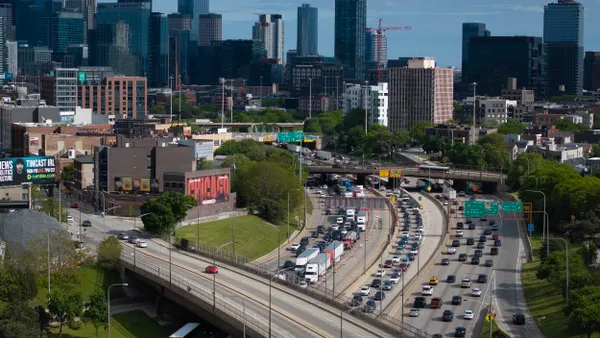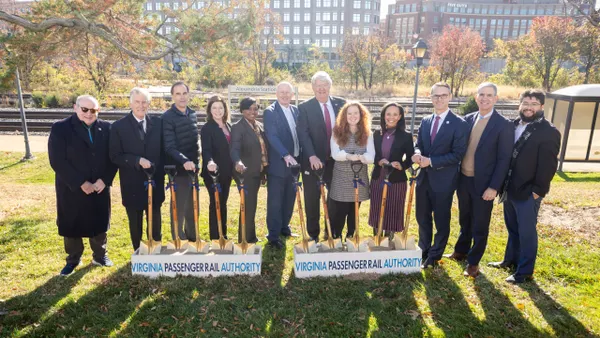Dive Brief:
- New York City has the highest job accessibility by transit, with 31% of the city’s commutes being made by transit, according to a new study from the Accessibility Observatory at the University of Minnesota.
- Kansas City, MO showed the greatest improvement in the annual survey, with a more than 17% increase in its transit accessibility in 2017, compared to 2016. Charlotte, NC and Austin, TX were second and third, respectively, in the year-over-year rankings.
- San Francisco, Chicago, Washington, D.C. and Boston rounded out the top five cities, a reflection of their robust transit systems and high density that allows residents to easily reach their jobs via transit.
Dive Insight:
The annual survey provides a metric for job availability, job location, population density and the availability of transit. The top cities should be no surprise: New York, San Francisco and Chicago all have a combination of dense downtowns and high-speed trains that can transport workers from suburbs. Other high-ranking cities, like Seattle and Denver, rely more on frequent bus networks and expanding light rail service, showing there's no one-size-fits-all approach. The findings are based on a weighted analysis of how many jobs a typical worker could reach in trip lengths between 10 and 60 minutes with only transit and walking.
Kansas City’s improvement comes after it consistently rated poorly for transit access; a 2011 Brookings Institution report found it was in the bottom 10 of similar sized cities for public transportation. Recently, the city has stepped up its investments, creating a 2.2-square-mile “smart district” in its downtown that includes streetcar service, and last year the city adopted a new transit-oriented development guidance. Still Kansas City still ranks low in overall accessibility, landing at 40 out of 49 cities, a sign of how much time progress on land use can take.
Overall, 42 out of the 49 cities in the survey showed improvements from the 2016 figures. Charlotte, even with a drop in ridership, still plans to invest as much as $7 billion to continue expanding light rail service, the Charlotte Observer reports. Other cities are even trying to make transit more accessible by using ridesharing and shuttles to transport people to major stops — Charlotte partnered with Lyft for "first mile, last mile" service, while Austin will test an autonomous shuttle downtown. Steps like that will continue to make transit a more appealing commuting option, without major structural changes to land use.
The findings — part of an effort led by the Minnesota Department of Transportation and supported by the Federal Highway Administration (FHA) and 10 more state DOTs — are meant to give transportation, planning and transit departments guidance on how to craft performance goals and even choose among project alternatives, with sustainability and congestion in mind.









